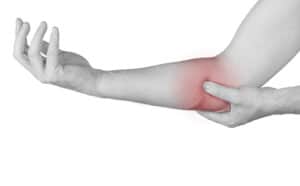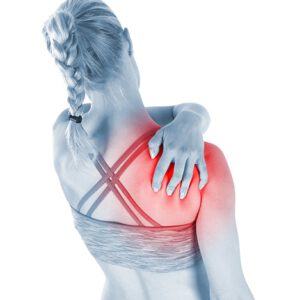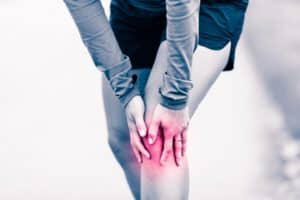You may have heard different names from doctors, physiotherapists, massage therapists, or manual osteopaths when it comes to tendon injury. These terms are often confused and used interchangeably. However, each term has its own unique meaning. With regard to a tendon injury, the 3 most common terms that you will likely hear are tendinopathy, tendinitis, and tendinosis.
When we start to have a discomfort in a tendon, we often assumed to be tendinitis. However, research suggests tendinitis is less common than tendinosis, and tendinosis is often misdiagnosed as tendinitis. Pain from either condition is considered to be the result of nerve transmission and other chemical irritants in a tendon, and not from inflammation.
Treatments that work well with Tendinitis & Tendinosis:
What are Tendons?
Tendons are made out of connective tissue that has a lot of strong collagen fibers in it. This means that they are very resistant to tearing, but not very flexible compared to muscles. Because they contain fewer blood vessels and nerves connection, they are prone to injury when overstrained and take a lot longer to heal than other types of tissue in the body. Muscles connect to the bones and joints through tendons, which help the joints and bones to move when muscles tighten and relax. Each muscle has two tendons, one proximally and one distally
Tendinopathy
Tendinopathy is often used to describe any problem with a tendon. These problems include tendonitis and tendinosis, as well as tendon tears and inflammation of membranes around a tendon. It is characterized by a combination of pain, swelling, and impaired performance.
Tendinitis
Tendinitis, also known as tendonitis, is a condition characterized by inflammation of a tendon. It typically occurs as a result of overuse or repetitive strain on a tendon. Tendinitis can affect any tendon in the body but is most commonly seen in the shoulder, elbow, wrist, knee, and ankle.
Symptoms of tendinitis include pain, swelling, and tenderness in the affected area. The pain may be worse during physical activity or movement and may improve with rest. In severe cases, tendinitis can lead to the rupture of a tendon, which may require surgical intervention.
Treatment for tendinitis typically involves rest, ice, compression, and elevation (RICE) to reduce inflammation and relieve pain. Non-steroidal anti-inflammatory drugs (NSAIDs) may also be prescribed to alleviate pain and inflammation. In some cases, physical therapy may be recommended to help restore range of motion and strength to the affected area.
Tendinosis
Tendinosis, also known as tendinopathy, is a condition characterized by chronic degeneration of a tendon. It typically occurs as a result of repeated microtrauma to a tendon, which leads to the breakdown of collagen fibers in the tendon. Tendinosis can affect any tendon in the body but is most commonly seen in the shoulder, elbow, wrist, knee, and ankle.
Symptoms of tendinosis include pain, stiffness, and weakness in the affected area. The pain may be worse during physical activity or movement and may not improve with rest. In severe cases, tendinosis can lead to the rupture of a tendon, which may require surgical intervention.
Treatment for tendinosis typically involves a combination of rest, physical therapy, and other non-invasive therapies. Platelet-rich plasma (PRP) injections and extracorporeal shockwave therapy (ESWT) may also be used to promote healing and reduce pain. In some cases, surgery may be required to repair or replace a severely damaged tendon.
Key Differences between Tendinitis and Tendinosis
Causes:
Tendinitis is typically caused by overuse or repetitive strain, while tendinosis is caused by chronic degeneration of a tendon due to repeated microtrauma.
Symptoms:
Tendinitis is characterized by pain, swelling, and tenderness in the affected area, while tendinosis is characterized by pain, stiffness, and weakness.
Treatment:
Treatment for tendinitis typically involves RICE, Anti-inflammatory prescription, and hands-on treatments such as physiotherapy, Osteopathy, or Massage Therapy. Very beneficial are also non-invasive therapies such as a cold laser.
Prognosis:
Tendinitis typically resolves with appropriate treatment, while tendinosis may require long-term management and may not fully resolve with treatment.
If you are experiencing pain or discomfort in a tendon, it is important to seek medical attention to determine the underlying cause and appropriate treatment plan. Early intervention can help prevent further damage and promote healing.
What are the most common tendon conditions?

Achilles Tendinitis: The Achilles tendon is the largest tendon in the body. Achilles tendinitis occurs when the tendon becomes irritated and inflamed.
It connects the calf muscles to the heel bone and is used when you walk, run, climb stairs, jump, and stand on your tip toes. Although the Achilles tendon can withstand great stresses from running and jumping, it is also prone to tendinitis, a condition associated with overuse.
Patellar Tendinitis: Jumper’s knee, also known as patellar tendonitis, is a condition characterized by inflammation of your patellar tendon. This connects your kneecap (patella) to your shin bone (tibia). Jumper’s knee weakens your tendon, and, if untreated, can lead to tears in your tendon.

Biceps Tendinitis: Biceps tendinitis is inflammation of the tendon around the long head of the biceps muscle. Biceps tendinosis is caused by degeneration of the tendon from athletics requiring overhead motion or from the normal aging process. Patients with biceps tendinitis or tendinosis usually complain of a deep, throbbing ache in the anterior shoulder.
Tennis Elbow: For more information about tennis elbow, follow this link.
Golfers Elbow: Golfer’s elbow is a form of tendonitis that causes pain and inflammation in the tendons that connect the forearm to the elbow. The pain centers on the bony bump on the inside of your elbow and may radiate into the forearm.
De Quervain’s Tendinitis: It is a painful condition where the tendons of the thumb gets swollen. When this happens, you may lose the ability to move your thumb and wrist normally. De Quervain’s tendinosis can be caused by overuse, repetitive grasping or inflammatory conditions like arthritis. If you have de Quervain tenosynovitis, you will probably feel pain when you turn your wrist, grasp anything or make a fist.
 Who is at risk for tendinopathy?
Who is at risk for tendinopathy?
Tendinopathy affects people of all ages, but some people are more likely than others to develop tendinopathy. Higher risk groups include:
Athletes: Most tendon injuries are caused by overuse of the specific muscle group. These injuries are common in athletes who do the same activity over and over again. Running and jumping, overhead hitting and throwing, commonly lead to overuse injuries. The injury can be made worse by poor conditioning, technique, and nutrition.
People over 40 years old. As people get older, their tendons become less flexible — which makes them easier to injure.
People who do repetitive tasks. Tendinitis is more common in people, such as gardeners and manual laborers, whose jobs involve: repeated motions, overhead reaching, vibration, forced movements
People who take certain medications. Certain medical conditions, such as diabetes, can increase the risk of tendinitis
Other risk factors include: People with: medical conditions, poor posture, poor muscle strength, women, pregnancy, hype flexibility in muscles.
Just having increased risk doesn’t necessarily mean you’ll get tendinitis or tendinosis.
How can I avoid tendinitis?
To avoid getting tendinitis, try to follow this recommendations :
- Do not stay in the same position for more than 30 min.
- Learn proper posture positions for all activities – sport, work, house chores
- Avoid using very tight grip when working with or picking up objects.
- Avoid using one hand when carrying heavy objects.
- If you start getting pain by any activity and pain is increasing, stop that activity.
- Warm up first and then gently stretch before starting the activity.
- Start slow. Gradually increase your activity level.
It is also important to note that both tendinitis and tendinosis can be prevented through proper self-care and injury prevention techniques. This includes warming up before physical activity, using proper technique during exercise, wearing appropriate footwear, and avoiding overuse or repetitive strain on a tendon.
In addition, maintaining a healthy lifestyle, including a balanced diet, regular exercise, and adequate rest and recovery, can also help prevent these conditions from occurring. If you have a history of tendinitis or tendinosis, it is important to discuss prevention strategies with your healthcare provider to reduce the risk of recurrence.
In summary, tendinitis and tendinosis are two common conditions that affect tendons in the body. While they may seem similar, they are actually different in terms of their causes, symptoms, and treatment options. Seeking medical attention early and following proper prevention techniques can help reduce the risk of developing these conditions and promote overall tendon health.
 Who is at risk for tendinopathy?
Who is at risk for tendinopathy?